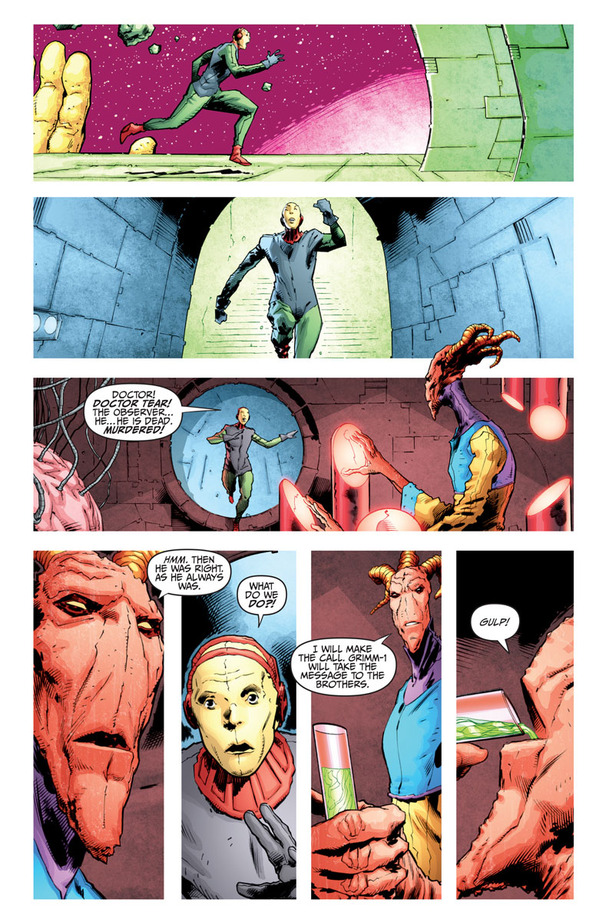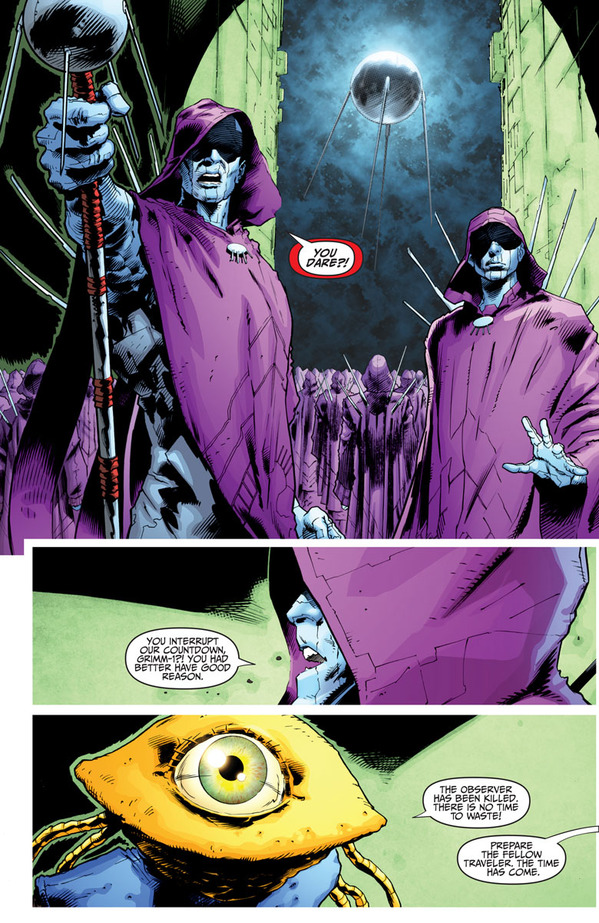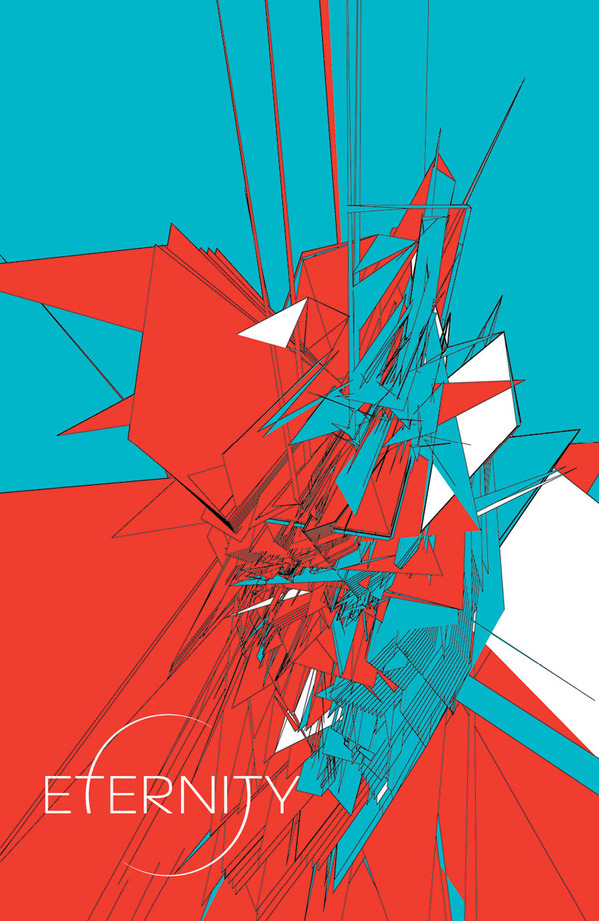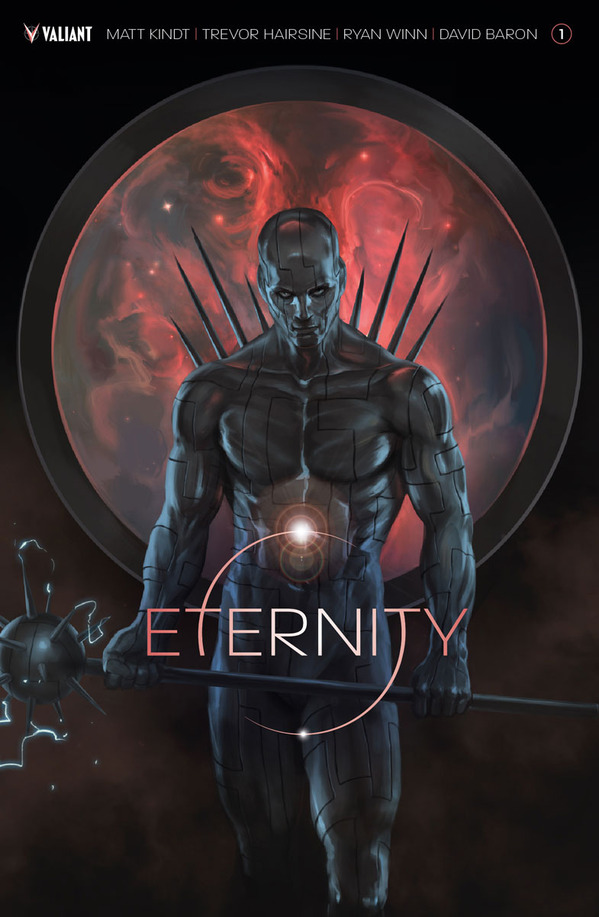Exclusive Valiant Comics Preview: Matt Kindt Orchestrates a Psychedelic Cosmic Opera in Eternity #1
Main Art by Felipe Massafera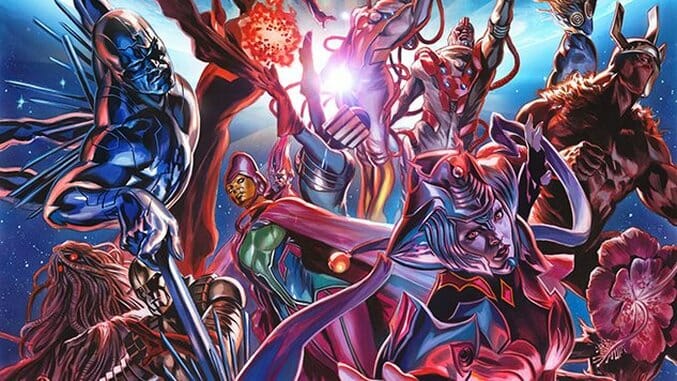
Cartoonist Matt Kindt’s oeuvre does not lack for scope. His creator-owned books have ventured from mountainous fights between telekinetic spies (Mind MGMT) to the aquatic shelf of earth where murder mysteries unfurl (Dept. H), but his most recent journey peels back the borders between realities. The veteran comic savant described his eclectic approach in a feature by Joshua Rivera published last April: “as a creator, I’m trying to do every genre. I’m a fan of all of them. I know it sounds like a joke, but it’s like—I’ve done crime. But then, you do enough of that, you want to do something else. So spies was sort of the next step, and then I slowly started to ramp it up and spread into other genres and then I finally get back to superheroes [with Valiant].” Ever the understatement, Kindt has also spent time at the revamped publisher developing the voodoo-goth climes of Deadside in Rapture and the barbaric nebulas of X-O Manowar.
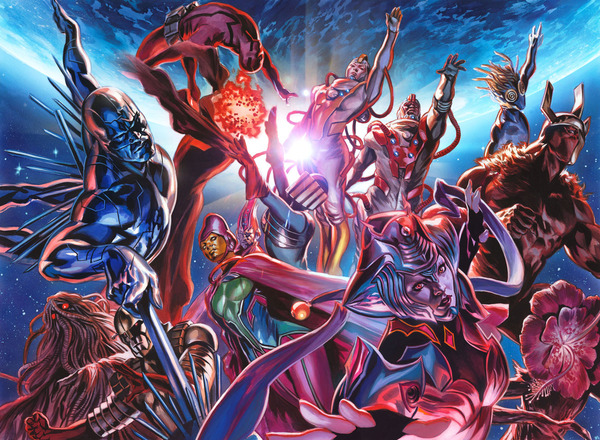
Eternity #1 Variant Cover by Felipe Massafera
One of Kindt’s most intriguing experiments, though, has been Divinity, a three-part cosmic experiment revolving around man’s ascent into omnipotence. Illustrated with grandiose breadth by Trevor Hairsine, vibrant colors from David Baron and organic inks via Ryan Winn, the narrative explores what humanity remains after an adrift Soviet astronaut—Abram Adams—grazes the border of a leaking dimension, imbuing him with reality-warping godhood. Over the course of 12 issues, that answer revealed itself in a man who gave new definition to fully human and fully celestial, attempting to mold the world in his communist ideology.
New miniseries Eternity, which features the same art team, flips that algorithm—Abrams is no longer the radical, but the grounding human element as he ventures into the alienating realm that granted him his titular divinity. It’s a new psychedelic playground for Kindt to flex his creative muscles in the space opera tradition of Jack Kirby and Stanley Kubrick. That contrast takes on even more import, as Abrams and his partner, Myshka, pursue their abducted child into a galactic rabbit hole of bizarre characters and candy-colored sci-fi cool.
Valiant provided an exclusive preview of the first issue—out in October—below. Paste also chatted with Kindt over email to discover more of his plans for this ambitious new foray into the heavens. ![]()
Paste: The cosmic seems to be undergoing a renaissance right now: Kirby’s Fourth World is being resurrected this summer and a 34-year-old Moebius book just won an Eisner. What makes 2017 ripe for stories of this scale?
Matt Kindt: Hm. Seems like a loaded question [Laughs]. I think escapism never really goes out of style. But I think that really sells Kirby’s work and cosmic stories short. I think a lot of times—the crazier the story, and the more outlandish the art and premise—it allows the reader to be sucker-punched a little bit with ideas and thoughts that they didn’t see coming. It’s the idea of traveling the world to find yourself or searching for something when you realize you have had it the entire time. Cosmic stuff is that way to me. It’s a way of really branching out and expanding ideas and letting your imagination run wild. Then once it’s all there on the page, you realize, Oh…this is what I really meant. This is what this is about. Cosmic storylines are a lot like art in general to me. The act of creating, or writing and drawing a story, is like that. I never start out knowing what a story is really “about.” I start out with a fun idea or a scene or a character—and in the case of this series—I started with a notebook full of characters and designs and went from there. It wasn’t until I’d really finished the scripts that I realized what it was about. And I think that’s a good thing. Knowing too much in advance takes the fun out of it, and, as a creator, I think I’d be tempted to hit the nail more on the head, but in a bad way.
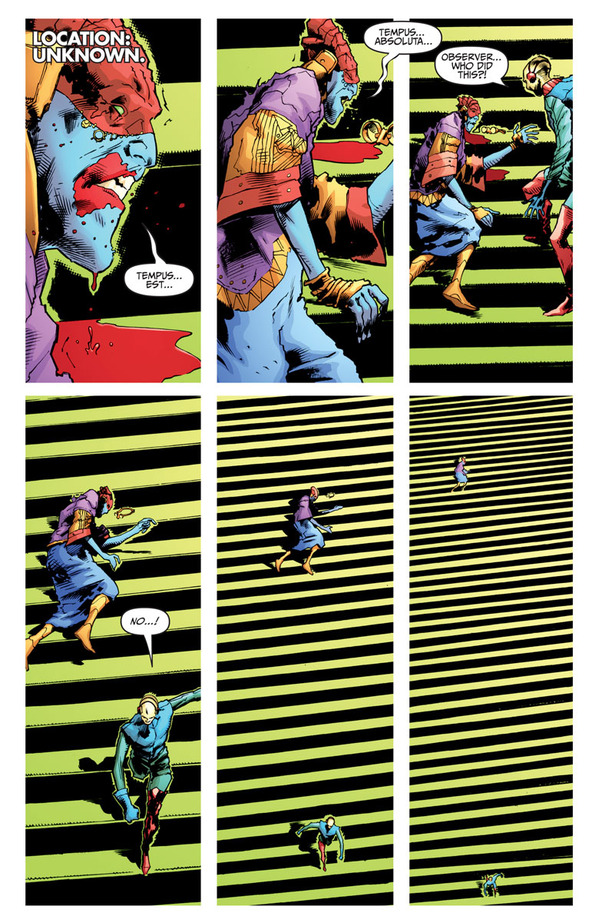
Eternity #1 Interior Art by Trevor Hairsine, David Baron and Ryan Winn
Paste: What’s your personal attraction to the genre?
Kindt: The Hunger Dogs, the DC Comics graphic novel that Kirby did, was my first exposure to Kirby. And I read and re-read that book—mostly to spite my brother, who didn’t like Kirby. I was using Jack to kind of distance myself from my (older) brother and “find my own thing”—and Kirby was that thing. There was nothing else like it: crazy colorful and sometimes crude drawings, contrasted most of what was going on in the late ‘80s and early ‘90s. And I really loved it. There’s an energy and a raw creative power to Kirby’s work that just inspires. I think there were a lot of half-finished ideas and thoughts in his work that were never really expanded on or followed through on. That’s inspiring, so that gives a chance to take some of these raw ideas and feelings and give shape to them, and breathe some 21st-century thoughts and worries and concerns into cosmic, nutty concepts.
Paste: With the previous Divinity miniseries, you provided a nice contrast of the galactic and the intimate—how dwarfed human sensibilities are in the scope of intergalactic omnipotence. Are we going to zoom out to more alien, and cosmically epic scenarios? How insignificant are we going to feel when this done?

